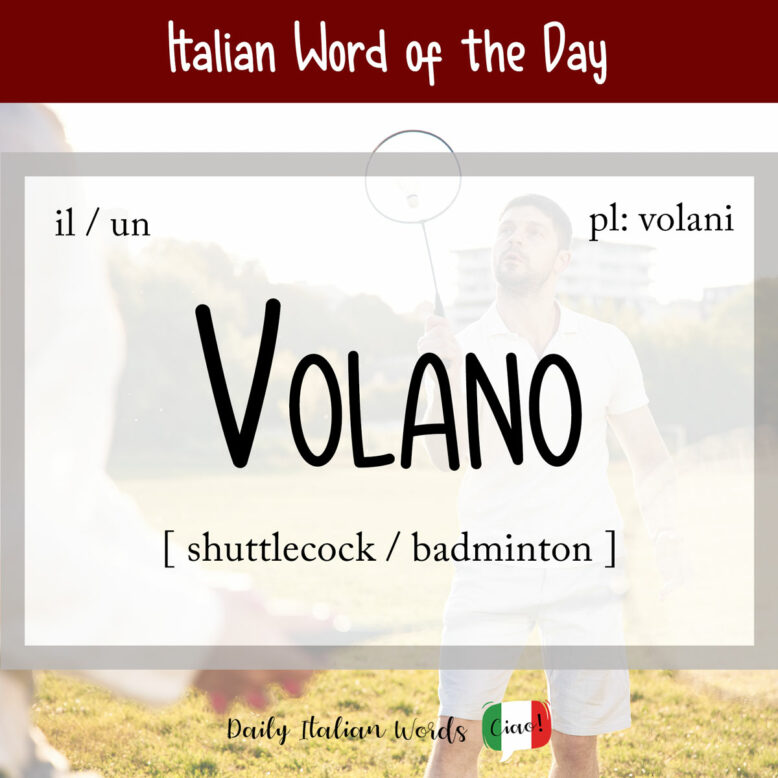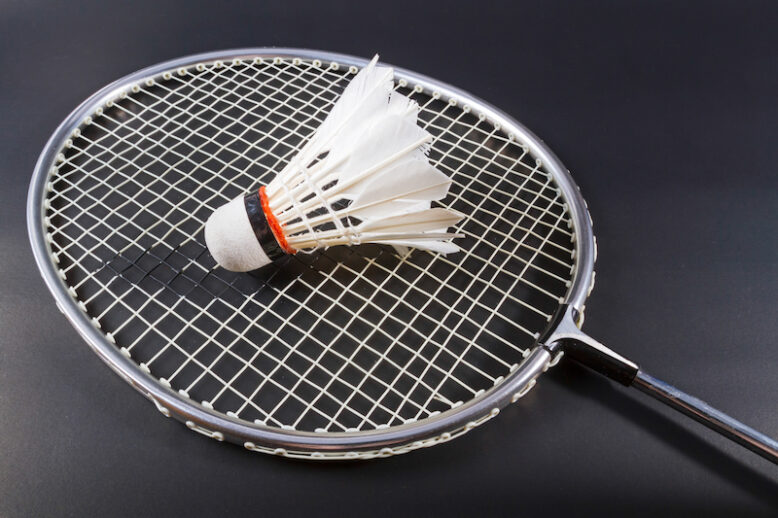I never thought I’d become passionate about a new sport later on in life, but that’s exactly what’s happened to me since I joined our local badminton club. What began as a single weekly game has transformed into 3-4 sessions each week, each lasting 2-3 hours. While I am far from the most skilled player on the court, my enthusiasm for the game keeps me coming back for more!
volano
badminton / shuttlecock

I was surprised to discover that the Italian word for the shuttlecock—volano—is also used to refer to the game itself. Interestingly, many Italians also opt for the English term badminton, pronounced with an Italian accent, of course.
Volano derives from the French volan(t), which is a derivative of voler (volare – to fly). It is a masculine noun that takes the following definite and indefinite articles:
- il volano = the shuttlecock
- un volano = a shuttlecock
- i volani = the shuttlecocks
- dei volani = some shuttlecocks
It’s important to remember that the accent in volano falls on the second syllable, not the first. This can be confusing, especially since the word is reminiscent of the third-person plural form of volare (to fly), which is also volano, but with the accent on the first syllable.
I volani volano da una parte all’altra del campo.
The shuttlecocks fly from one side of the court to the other.
A volano is essentially a pallina (small ball) made of sughero (cork) and has alette (little wings) composed of sixteen piume (feathers). Its conical shape provides excellent aerodynamic stability.
In addition to having a campo (court) to play on, it’s also essential to invest in a quality racchetta (racket) and a rete (net).
Here are a few verbs you might hear during a badminton game:
- colpire il volano = to hit the shuttlecock
- correre = to run
- saltare = to jump
- vincere / perdere la partita = to win / lose the game
- segnare un punto = to score a point
- servire = to serve
- commettere un fallo = to commit a foul

Volano is also the word for a flywheel which, according to the New Oxford American Dictionary, is a heavy rotating wheel in a machine used to increase the machine’s momentum.
Heather Broster is a graduate with honours in linguistics from the University of Western Ontario. She is an aspiring polyglot, proficient in English and Italian, as well as Japanese, Welsh, and French to varying degrees of fluency. Originally from Toronto, Heather has resided in various countries, notably Italy for a period of six years. Her primary focus lies in the fields of language acquisition, education, and bilingual instruction.


